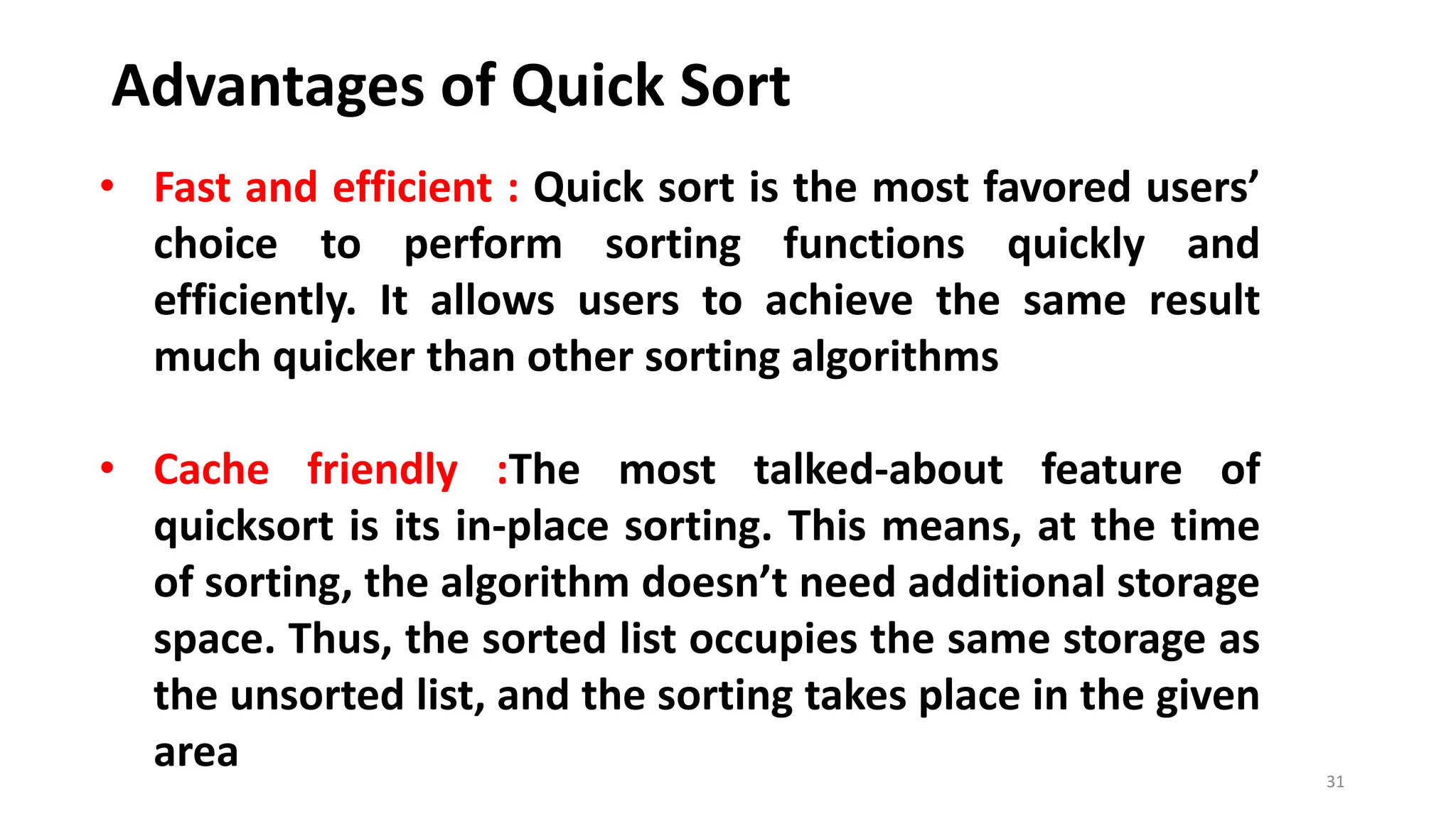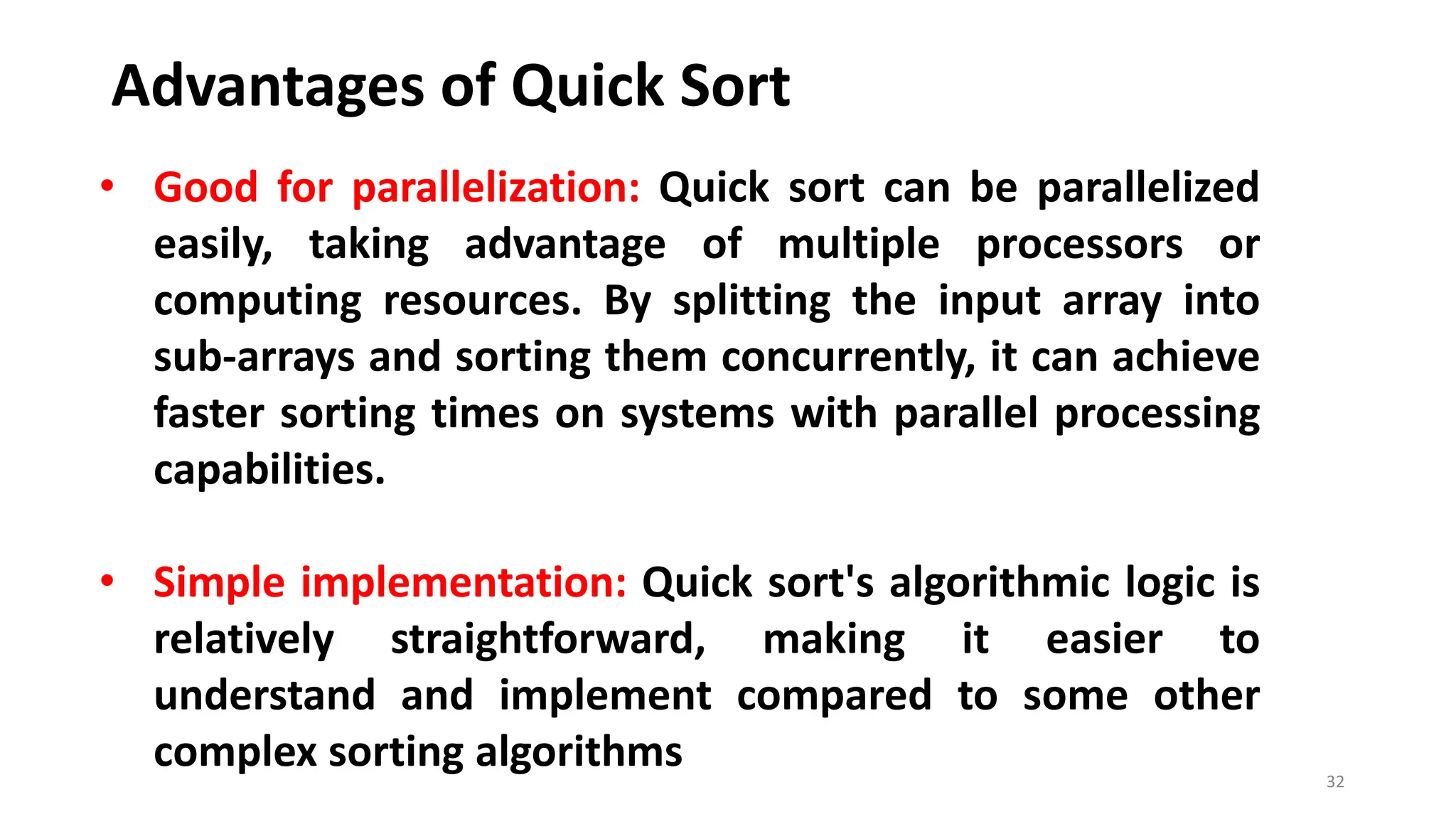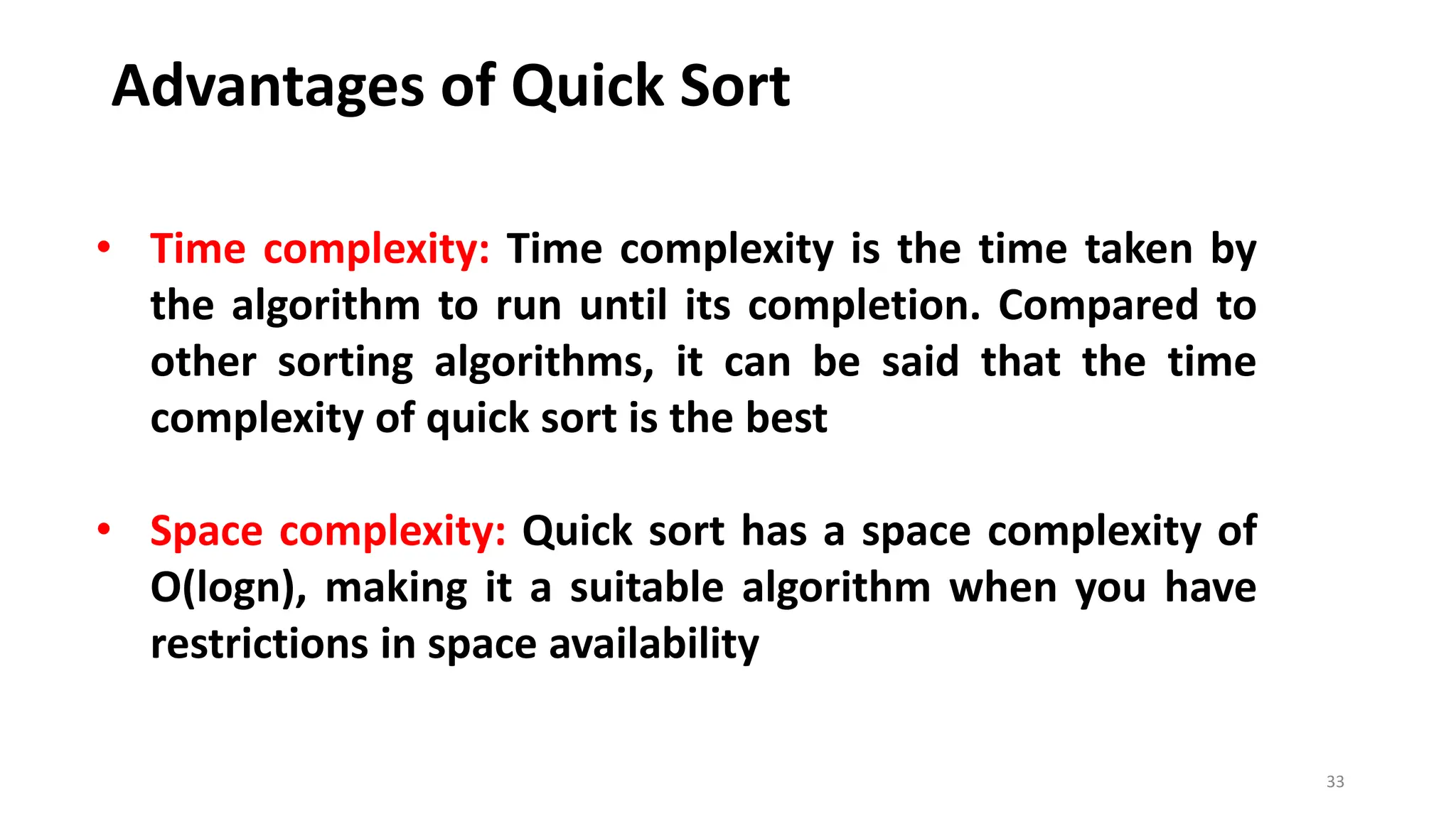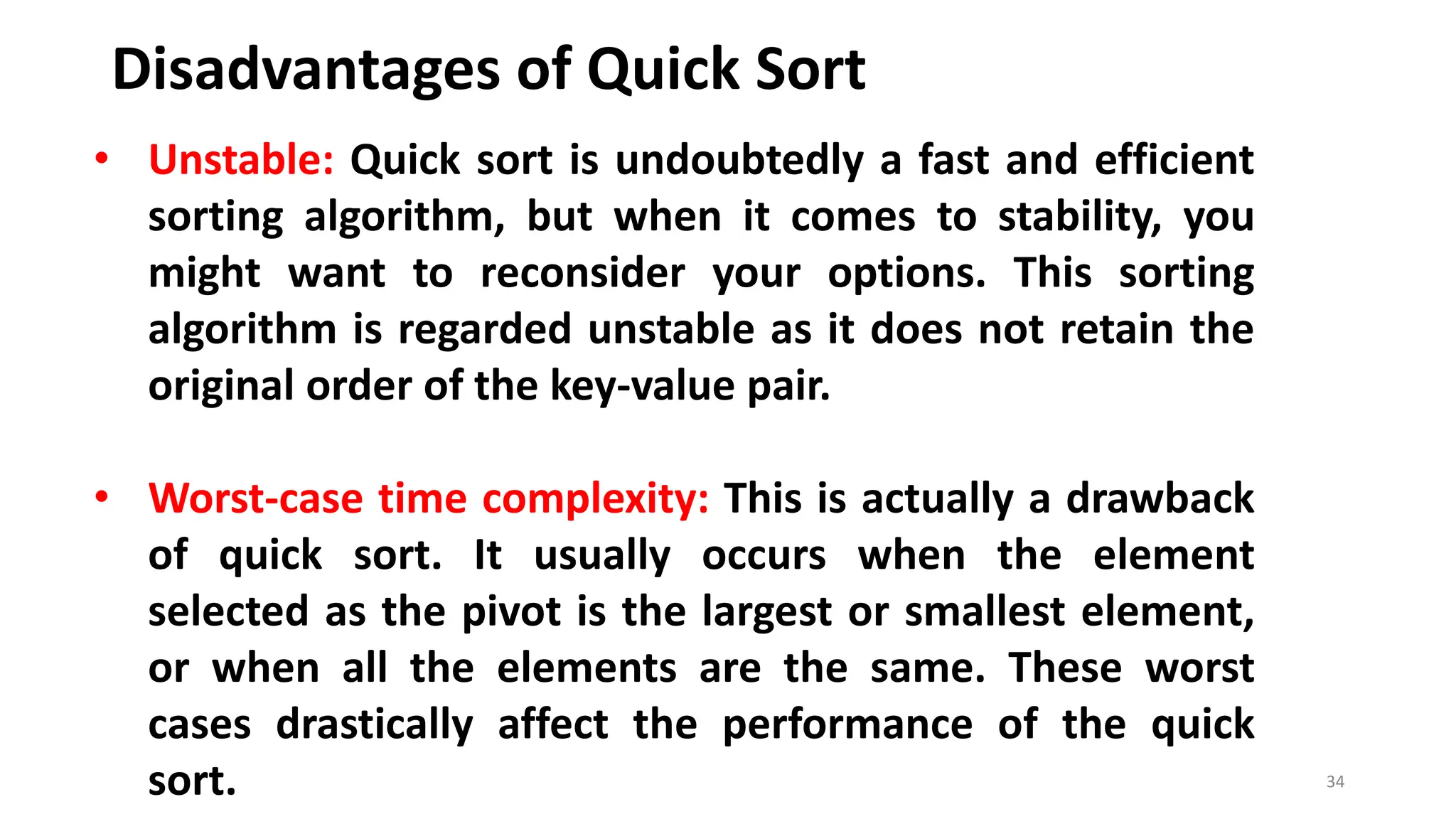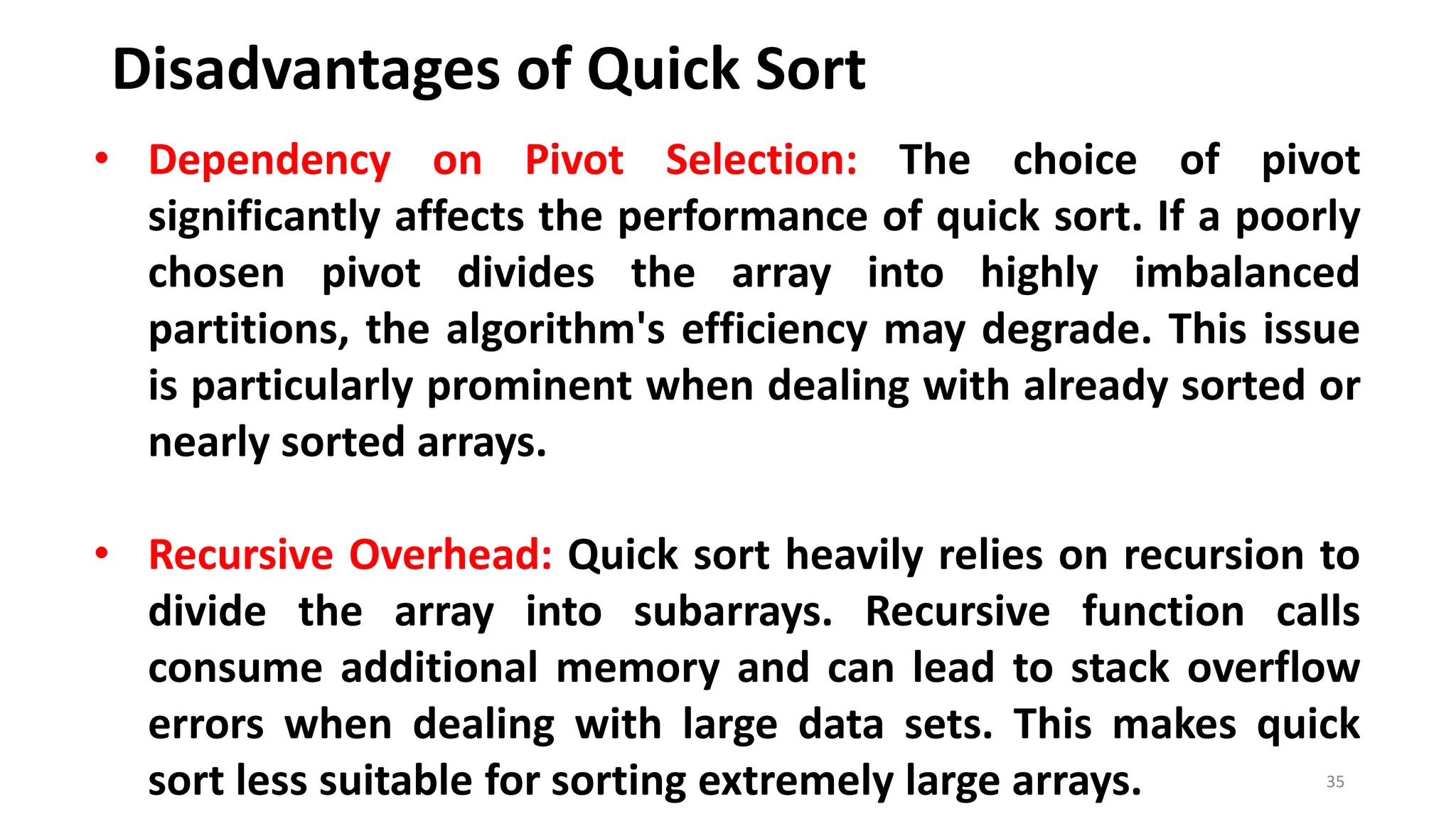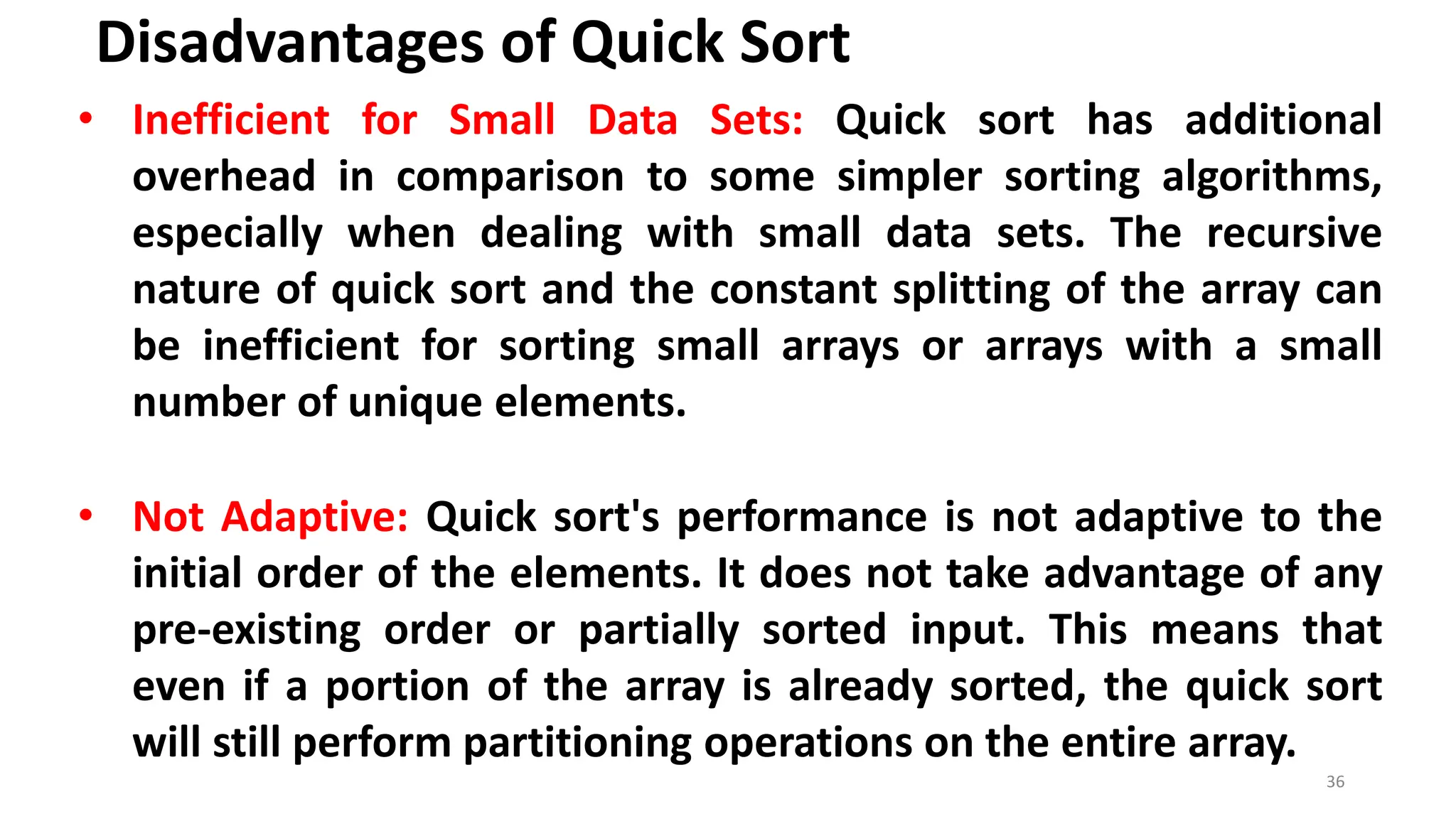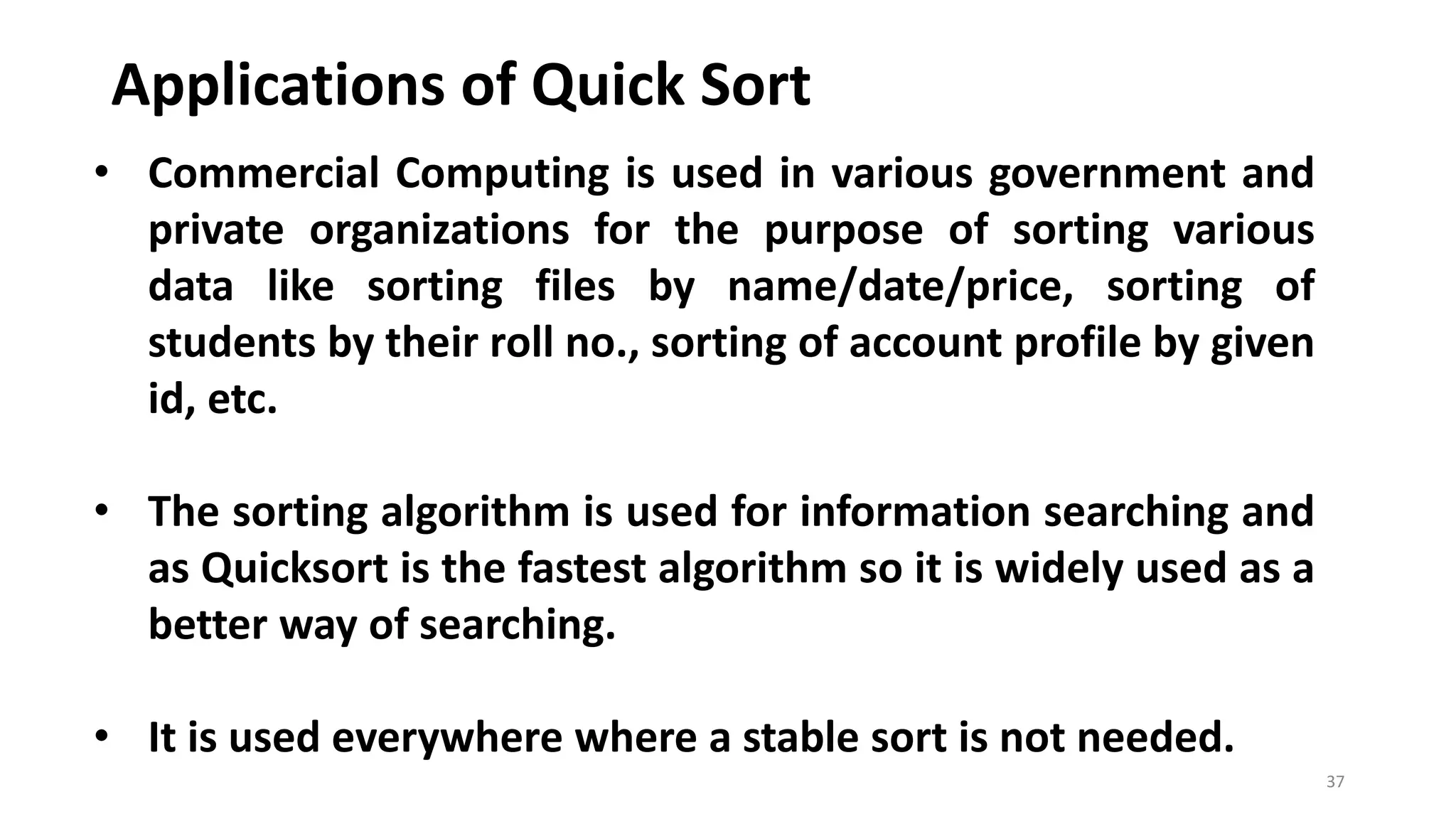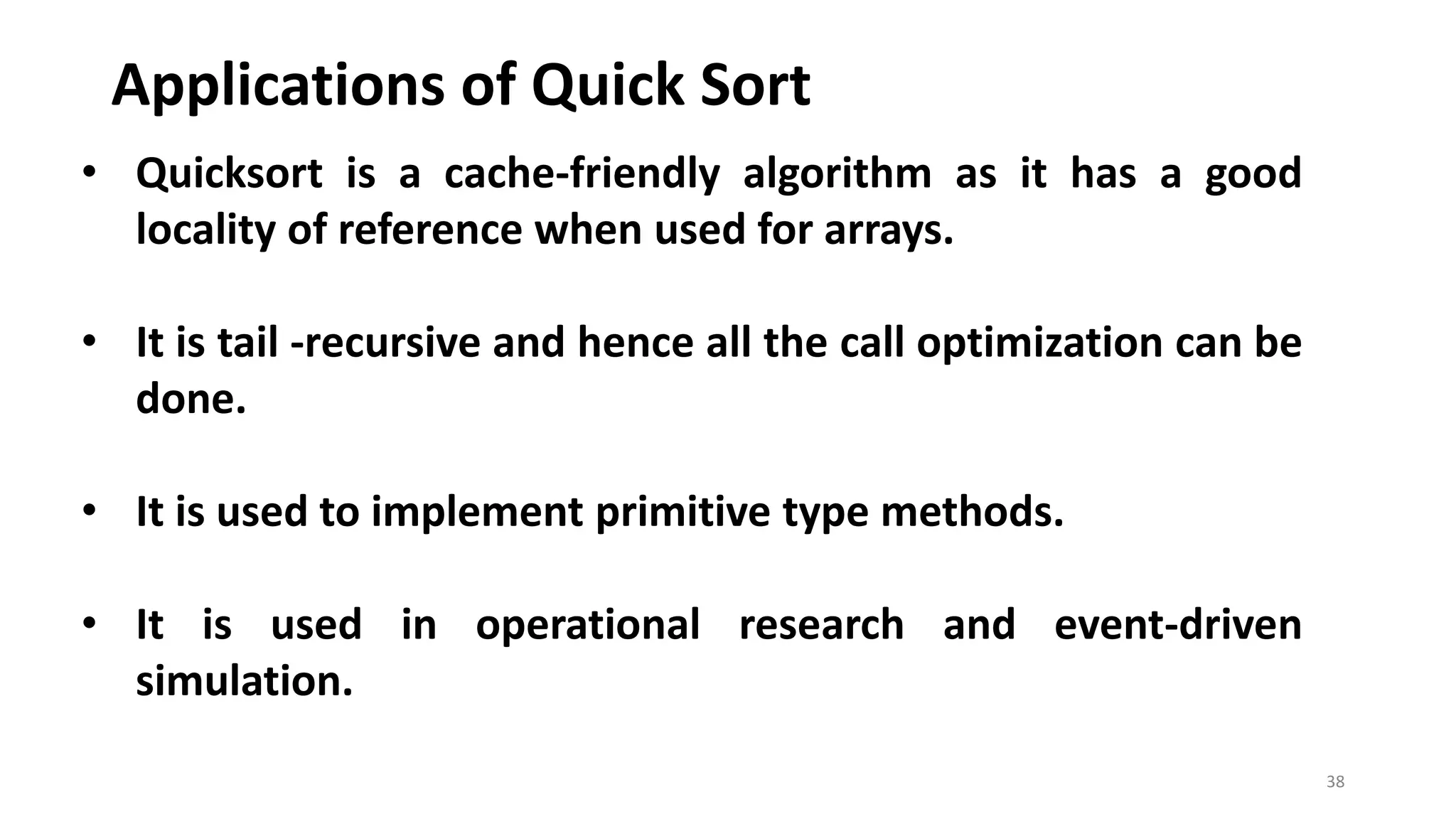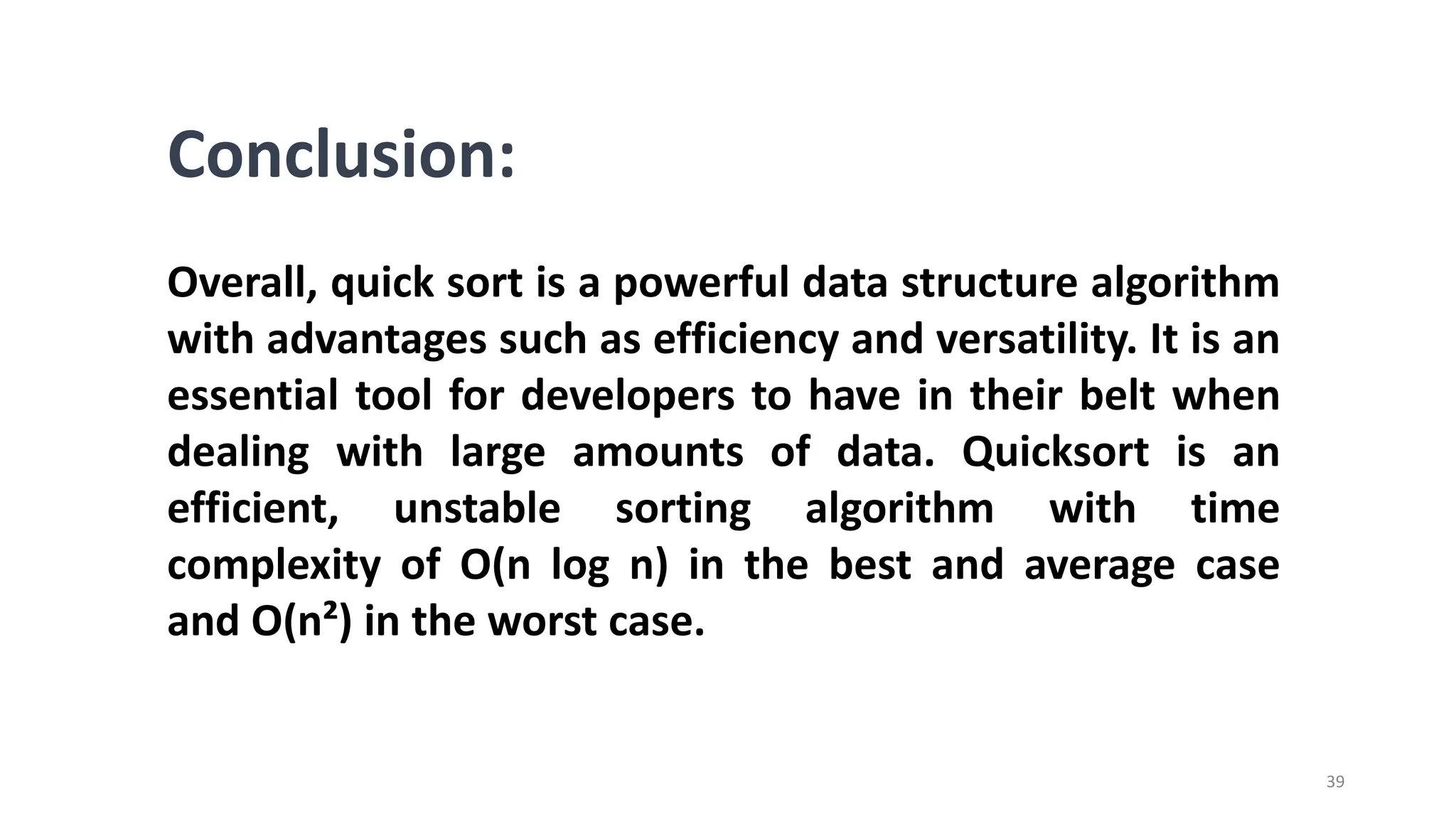Quick Sort is a sorting algorithm that partitions an array around a pivot element, recursively sorting the subarrays. It has a best case time complexity of O(n log n) when partitions are evenly divided, and worst case of O(n^2) when partitions are highly imbalanced. While fast, it is unstable and dependent on pivot selection. It is widely used due to its efficiency, simplicity, and ability to be parallelized.
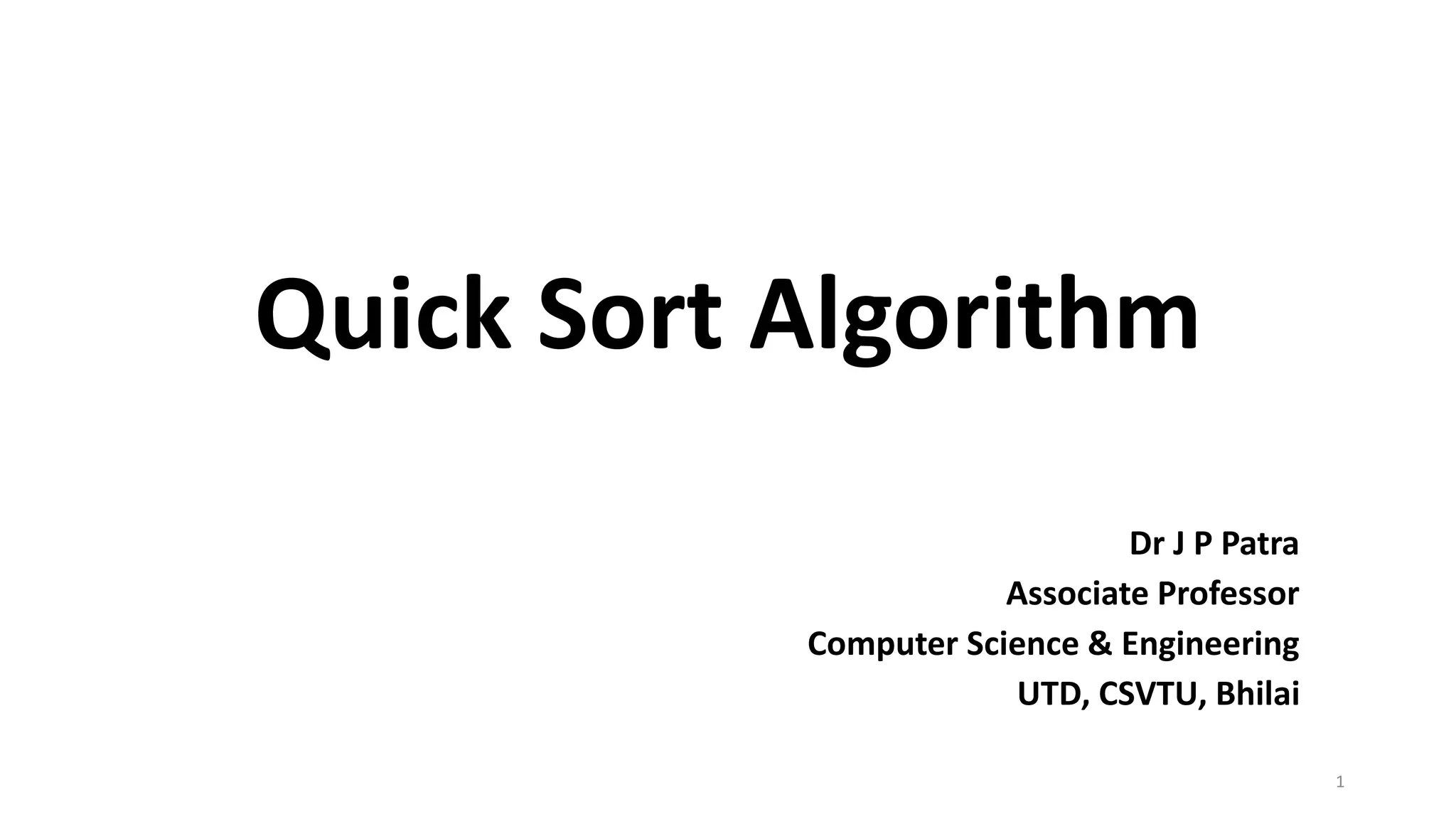
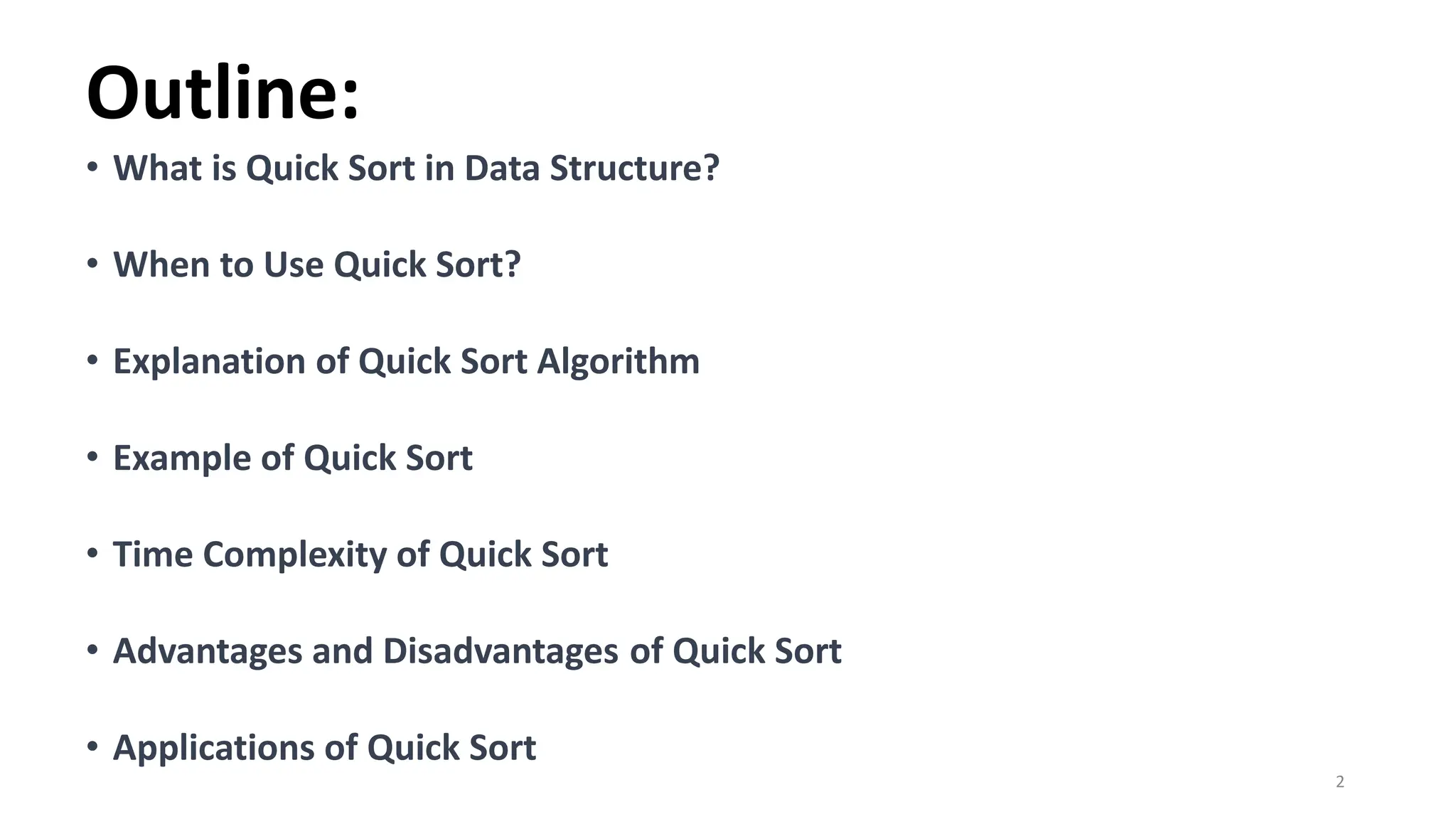
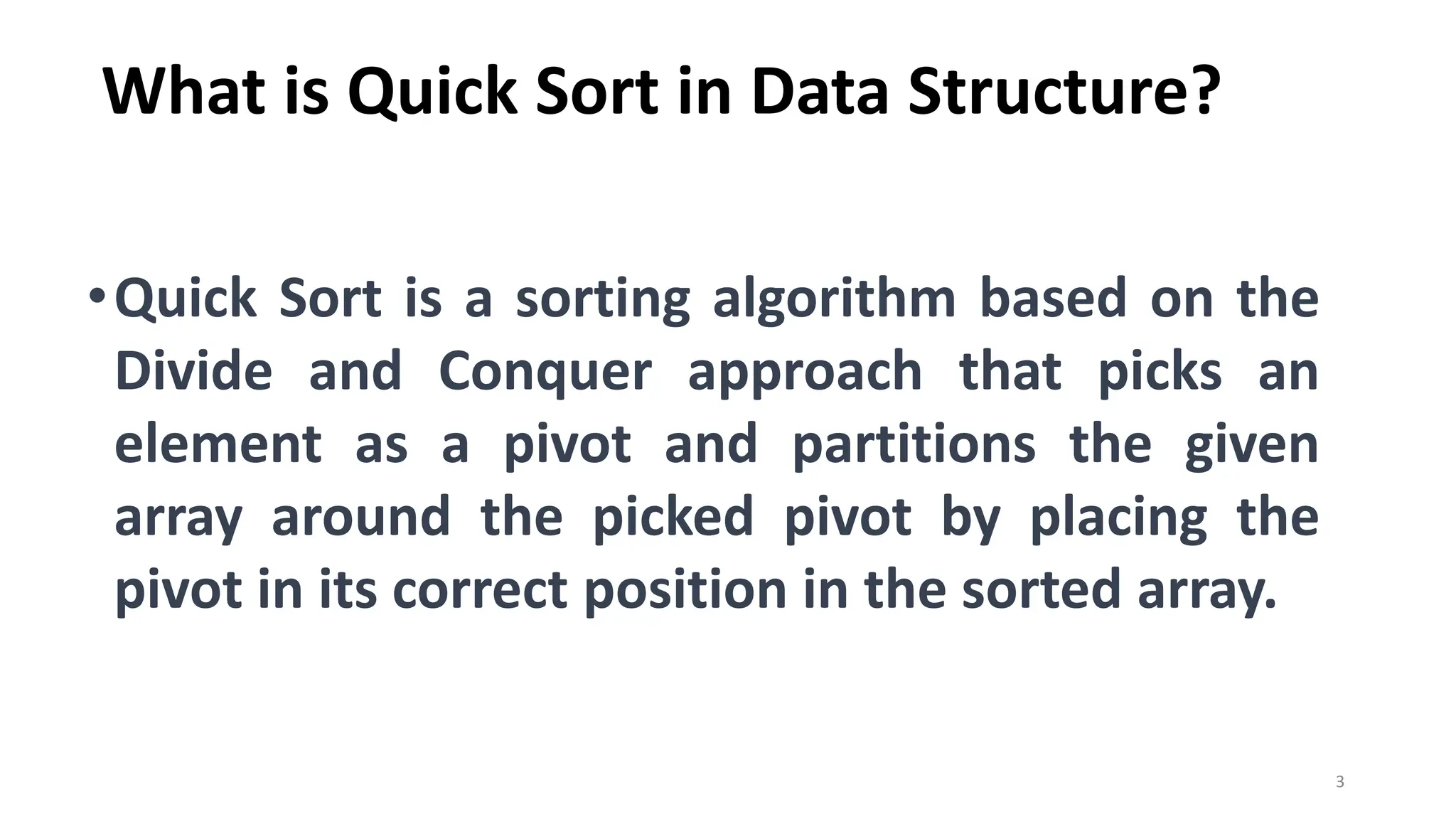
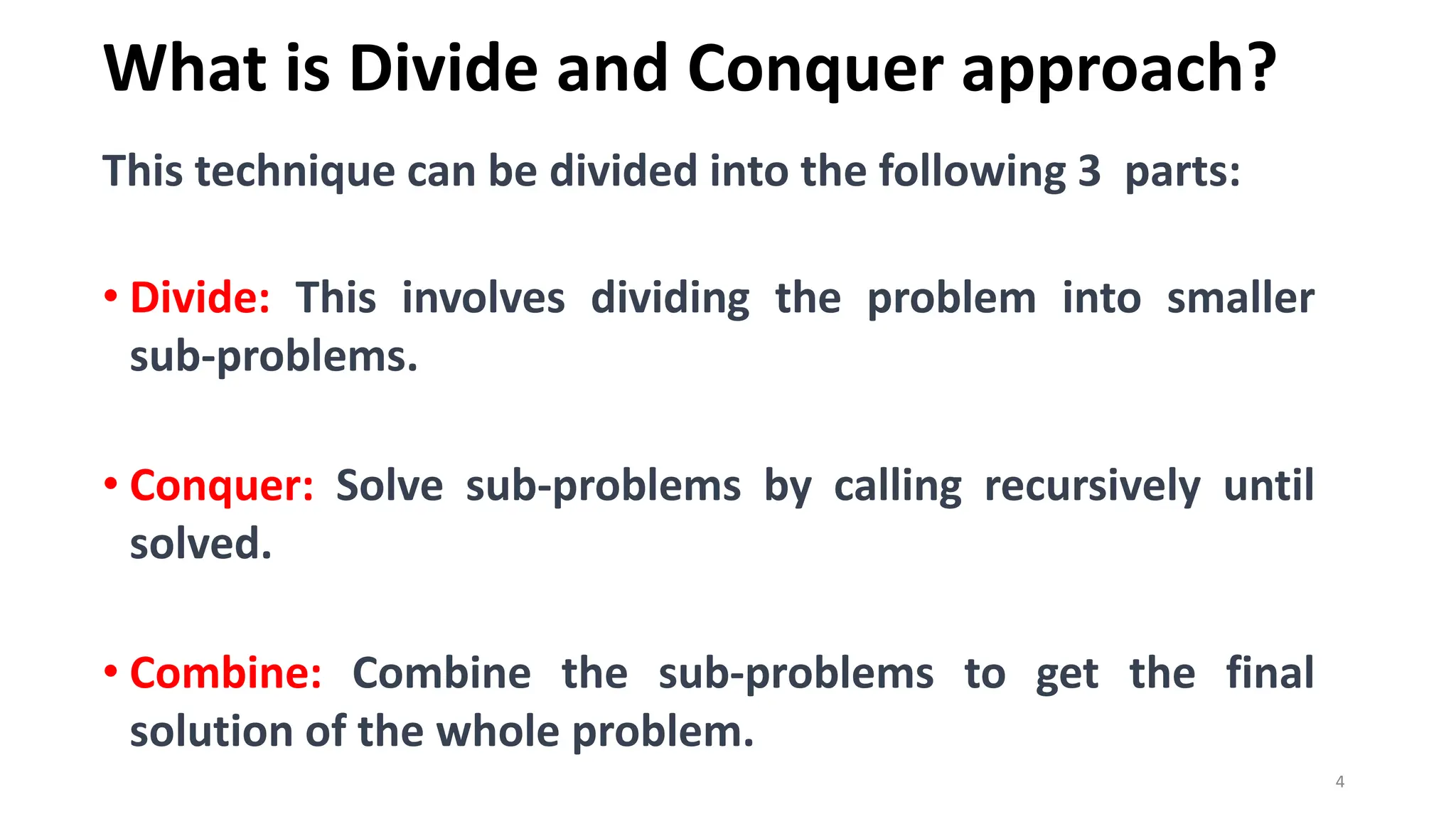
![5
Here is the three-steps divide-and-conquer process for
sorting a typical array A[p….r].
Divide: Partition (rearrange) the array A[p.....r] into two
(possibly empty) subarrays A[p.....q - 1] and A[q+1.....r] such
that each element of A[p.....q - 1] is less than to A[q], and
each element of A[q+1......r] is greater than or equal to A[q]
Compute the index q as part of this partitioning procedure.](https://image.slidesharecdn.com/class13quicksortalgorithm-231104025026-e209dca2/75/Class13_Quicksort_Algorithm-pdf-5-2048.jpg)
![6
Conquer: Sort the two subarrays A[p....q - 1] and
A[q+1......r] by recursive calls to quicksort.
Combine: Since the subarrays are sorted in place, now
work is needed to combine them
So we can define that the entire array A[p....r] is now
sorted.](https://image.slidesharecdn.com/class13quicksortalgorithm-231104025026-e209dca2/75/Class13_Quicksort_Algorithm-pdf-6-2048.jpg)
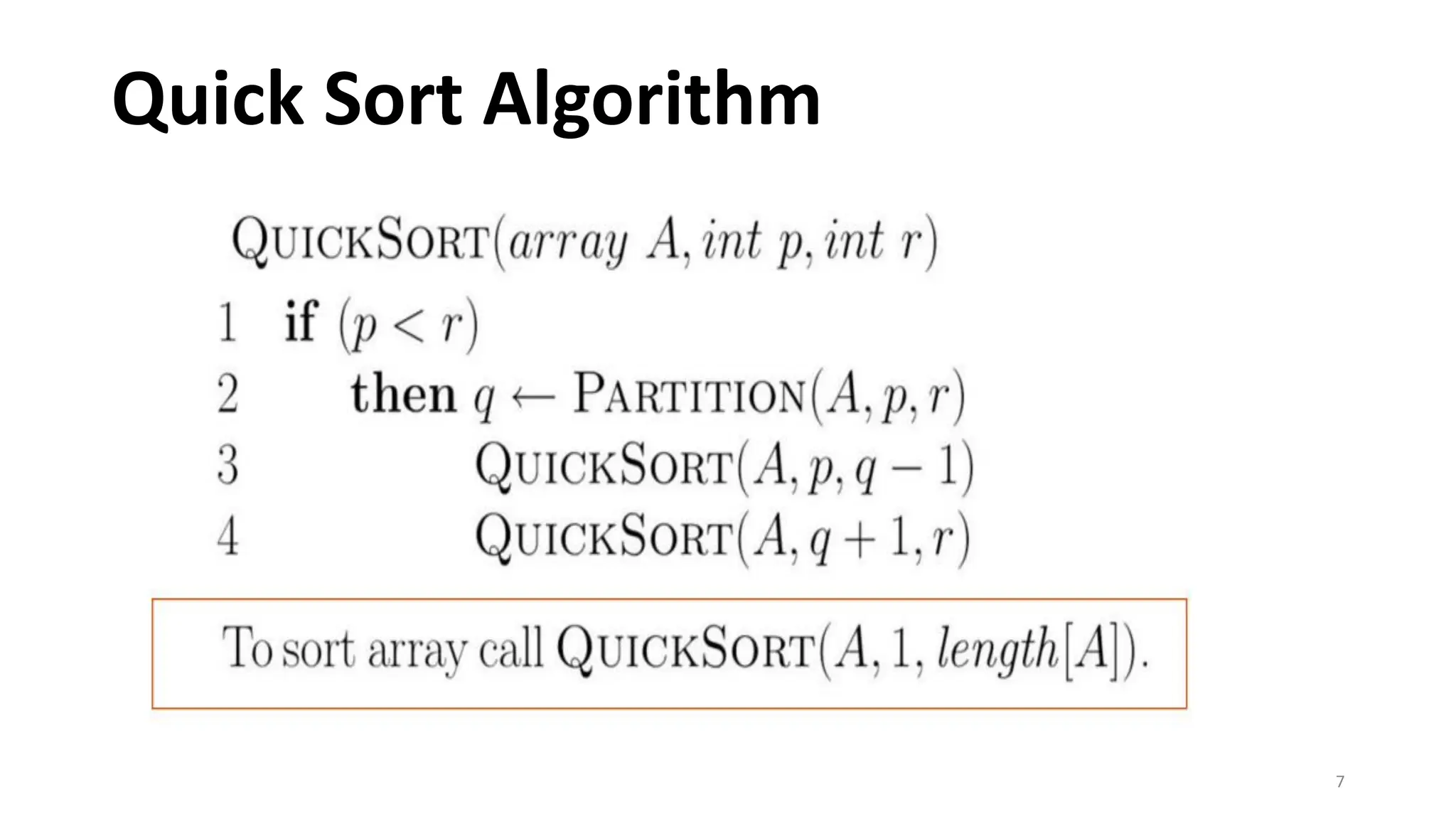
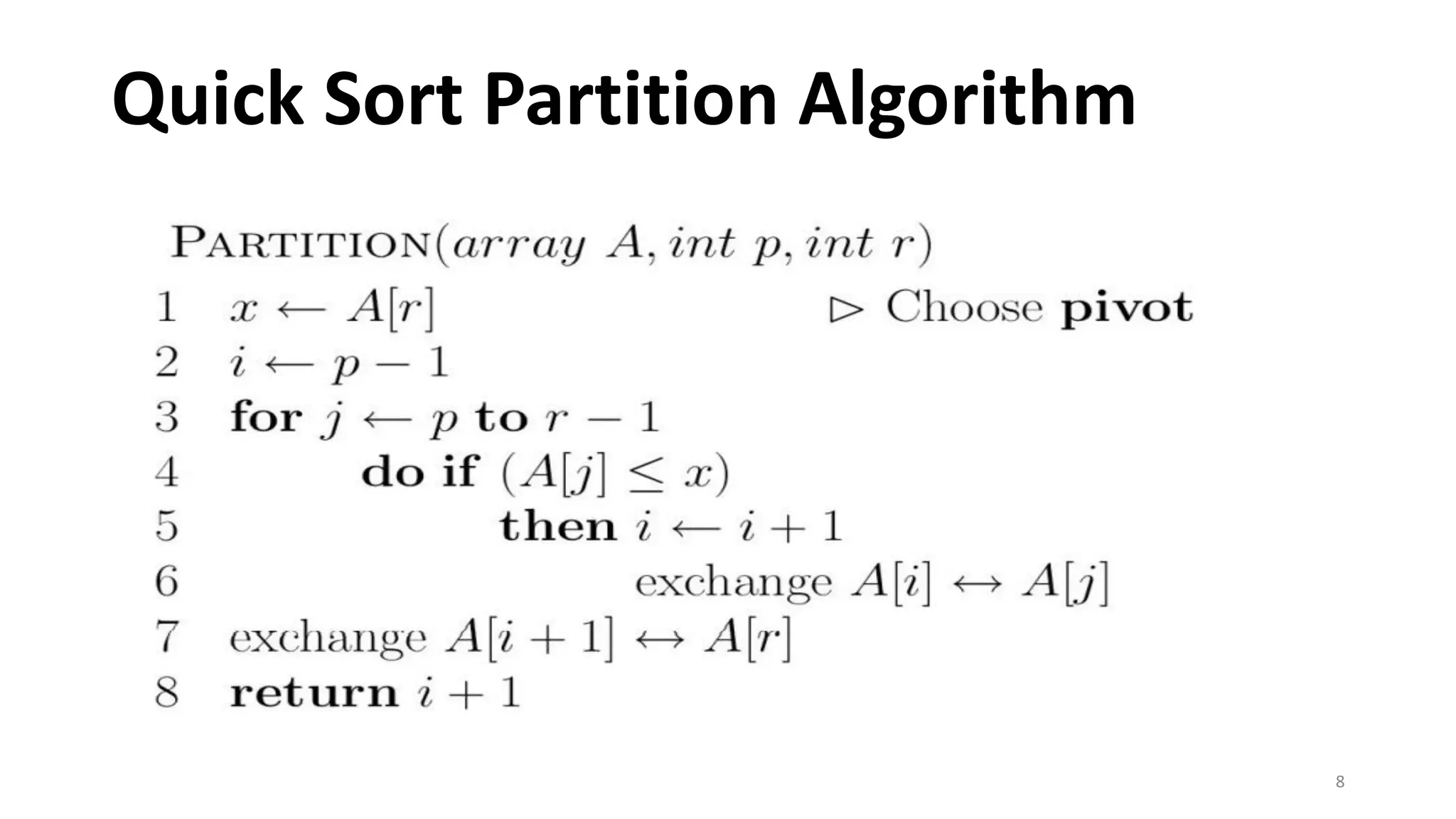
![9
• Here the value of p=1 and r=8
• As per the Partition Algorithm
the value of x=4 (As A[r]=A[8]=4)
• The value of i=0 (i.e p-1= 1-1=0)
• As per step no. 3 for loop will
start from (p=1) and it will
continue up to (r-1=8-1=7).
Example : A=[2, 8, 7, 1, 3, 5, 6, 4]](https://image.slidesharecdn.com/class13quicksortalgorithm-231104025026-e209dca2/75/Class13_Quicksort_Algorithm-pdf-9-2048.jpg)
![10
• A=[2, 8, 7, 1, 3, 5, 6, 4]
• Here the value of
x= 4, r=8, i=0, j=1, A[1]=2
do if (2≤ 4) Ture
• Then the value of iwill be 1 (i. e i=1)
and we have to swap :A[1] ↔ A[1]
• Output :
Process for j=1](https://image.slidesharecdn.com/class13quicksortalgorithm-231104025026-e209dca2/75/Class13_Quicksort_Algorithm-pdf-10-2048.jpg)
![11
• A=[2, 8, 7, 1, 3, 5, 6, 4]
• Here the value of
x= 4, r=8, i=1, j=2, A[2]=8
do if (8≤ 4) False
• Then we will skip the steps 5 and
6 and the output after
processing j=2 will be define as
• Output :
Process for j=2](https://image.slidesharecdn.com/class13quicksortalgorithm-231104025026-e209dca2/75/Class13_Quicksort_Algorithm-pdf-11-2048.jpg)
![12
• A=[2, 8, 7, 1, 3, 5, 6, 4]
• Here the value of
x= 4, r=8, i=1, j=3, A[3]=7
do if (7≤ 4) False
• Then we will skip the steps 5 and
6 and the output after
processing j=3 will be define as
• Output :
Process for j=3](https://image.slidesharecdn.com/class13quicksortalgorithm-231104025026-e209dca2/75/Class13_Quicksort_Algorithm-pdf-12-2048.jpg)
![13
• A=[2, 8, 7, 1, 3, 5, 6, 4]
• Here the value of
x= 4, r=8, i=1, j=4, A[4]=1
do if (1≤ 4) True
• Then the value of i will be 2 (i. e i=2)
and we have to swap :A[2] ↔ A[4]
• Output :
Process for j=4](https://image.slidesharecdn.com/class13quicksortalgorithm-231104025026-e209dca2/75/Class13_Quicksort_Algorithm-pdf-13-2048.jpg)
![14
• A=[2, 1, 7, 8, 3, 5, 6, 4]
• Here the value of
x= 4, r=8, i=2, j=5, A[5]=3
do if (3≤ 4) True
• Then the value of i will be 3 (i. e i =3)
and we have to swap :A[3] ↔ A[5]
• Output :
Process for j=5](https://image.slidesharecdn.com/class13quicksortalgorithm-231104025026-e209dca2/75/Class13_Quicksort_Algorithm-pdf-14-2048.jpg)
![15
• A=[2, 1, 3, 8, 7, 5, 6, 4]
• Here the value of
x= 4, r=8, i=3, j=6, A[6]=5
do if (5≤ 4) False
• Then we will skip the steps 5 and 6
and the output after processing j=6
will be define as
• Output :
Process for j=6](https://image.slidesharecdn.com/class13quicksortalgorithm-231104025026-e209dca2/75/Class13_Quicksort_Algorithm-pdf-15-2048.jpg)
![16
• A=[2, 1, 3, 8, 7, 5, 6, 4]
• Here the value of
x= 4, r=8, i=3, j=7, A[7]=6
do if (6 ≤ 4) False
• Then we will skip the steps 5 and 6
and the output after processing j=7
will be define as
• Output :
Process for j=7](https://image.slidesharecdn.com/class13quicksortalgorithm-231104025026-e209dca2/75/Class13_Quicksort_Algorithm-pdf-16-2048.jpg)
![17
• A=[2, 1, 3, 8, 7, 5, 6, 4]
or
Here the value of
x= 4, r=8, i=3, j=7, A[7]=6
Now using step 7 we have to exchange
A[i+1] ↔ A[r] i.e A[4] ↔ A[8]
Output:
Step 8 will return value 4
Process Step 7 and 8](https://image.slidesharecdn.com/class13quicksortalgorithm-231104025026-e209dca2/75/Class13_Quicksort_Algorithm-pdf-17-2048.jpg)
![• Using Quick Sort Partition algorithm return the value 4 and
that value will be assign to variable q.
• Now we divide the array in two sub arrays A[1…3] and
A[5….8] and the position of the Pivot element is 4.
18
Sub Array2 A[5….8]
Sub Array1 A[1….3] Position of Pivot
element](https://image.slidesharecdn.com/class13quicksortalgorithm-231104025026-e209dca2/75/Class13_Quicksort_Algorithm-pdf-18-2048.jpg)
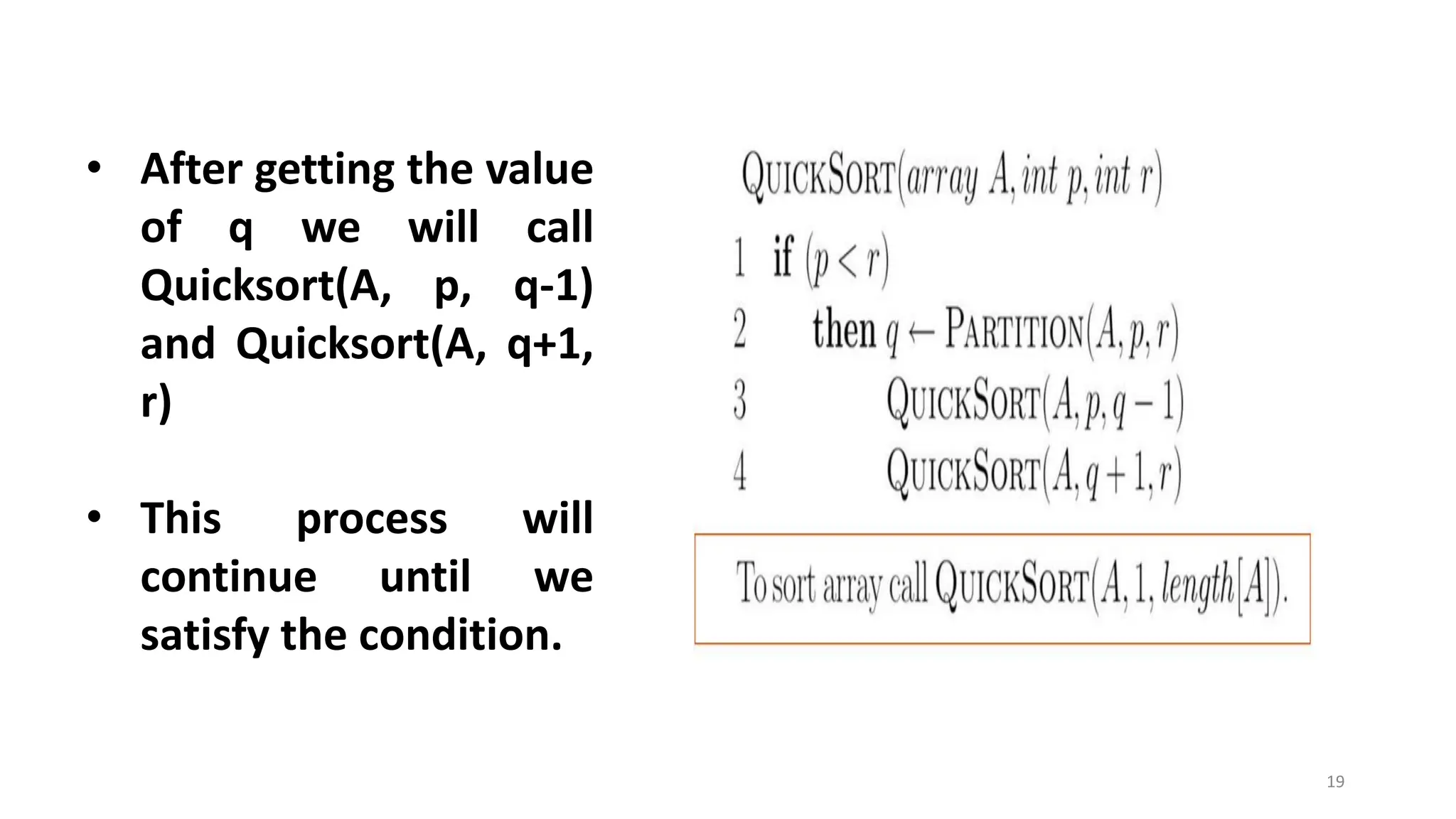
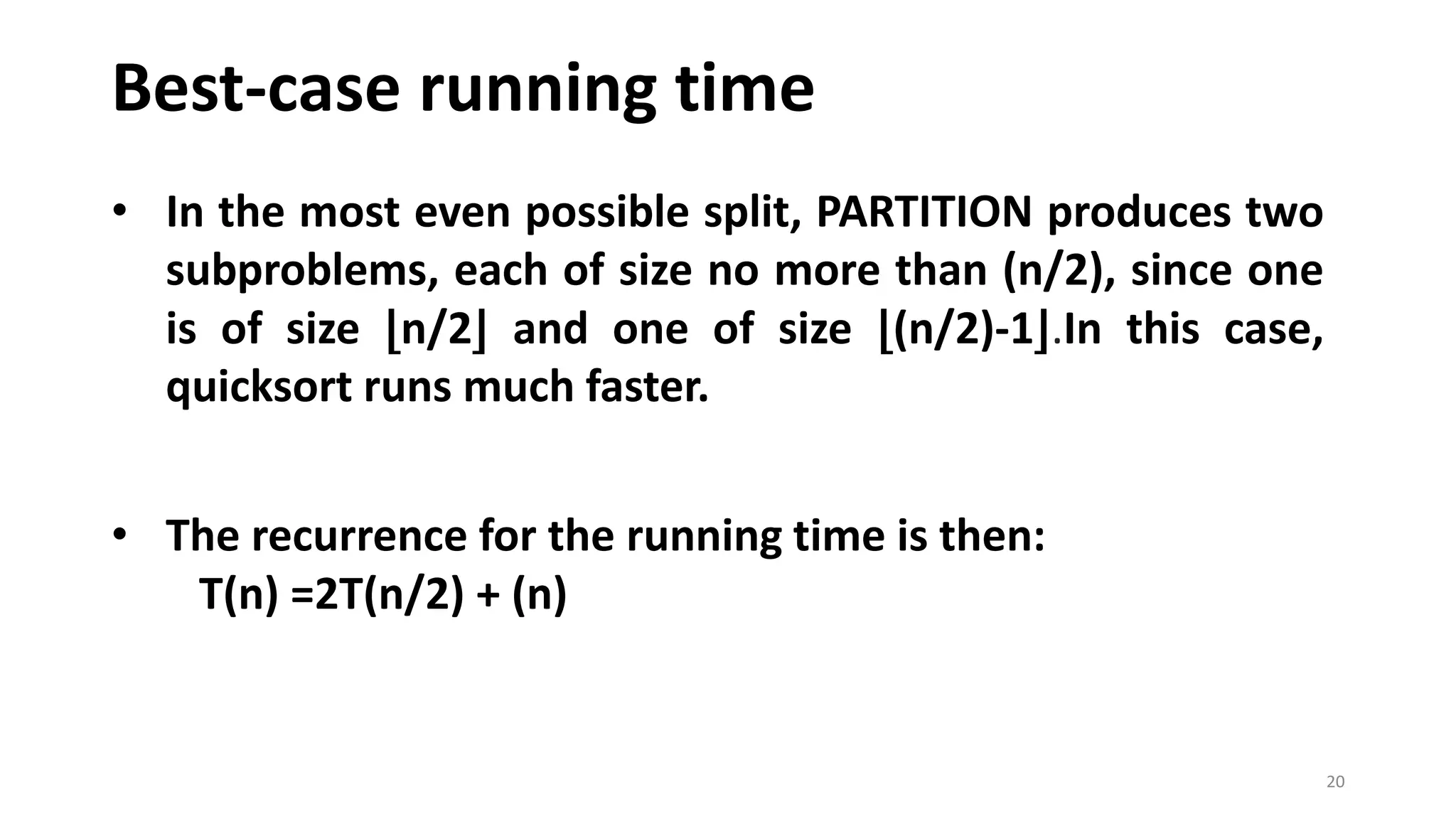
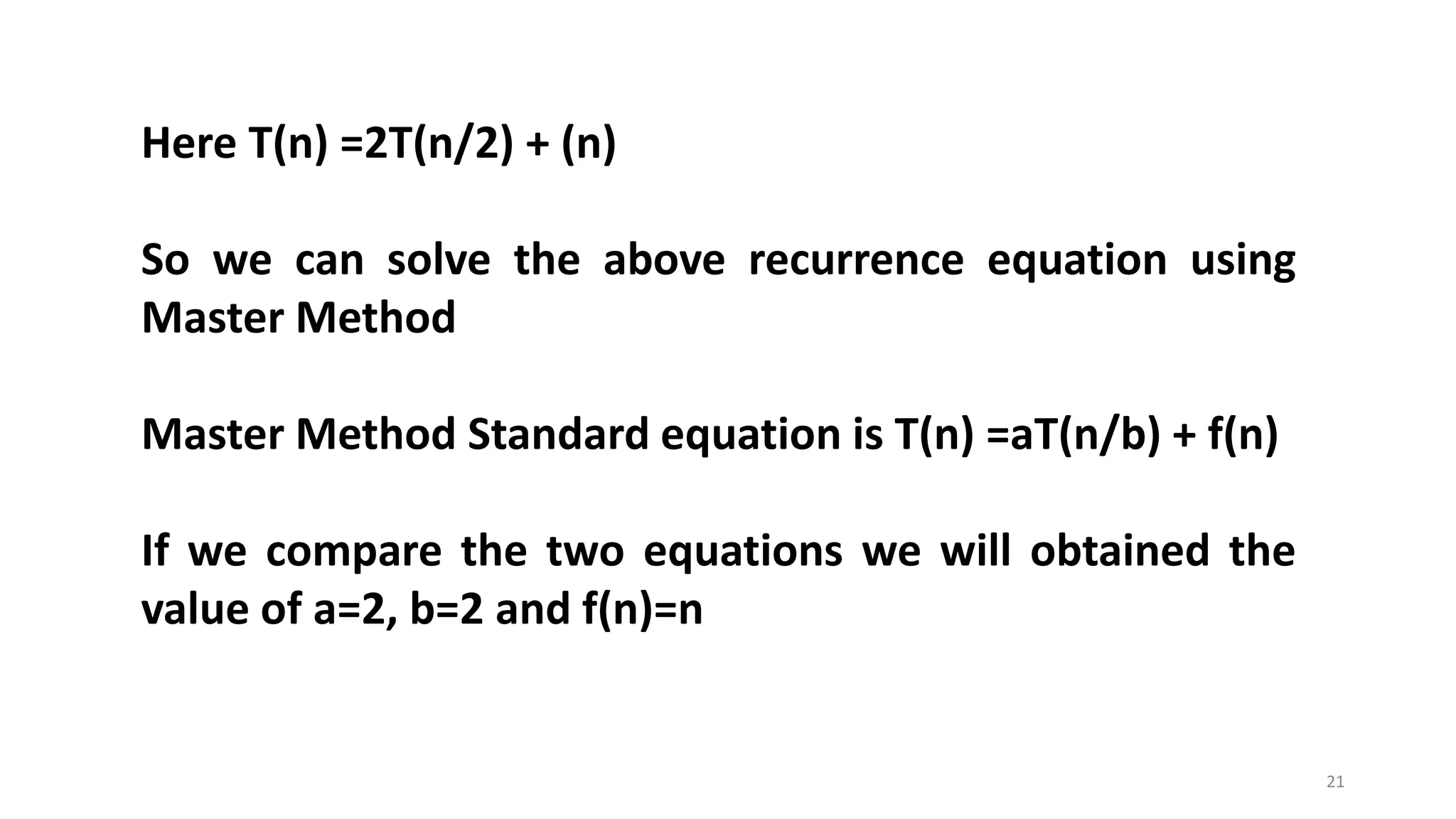
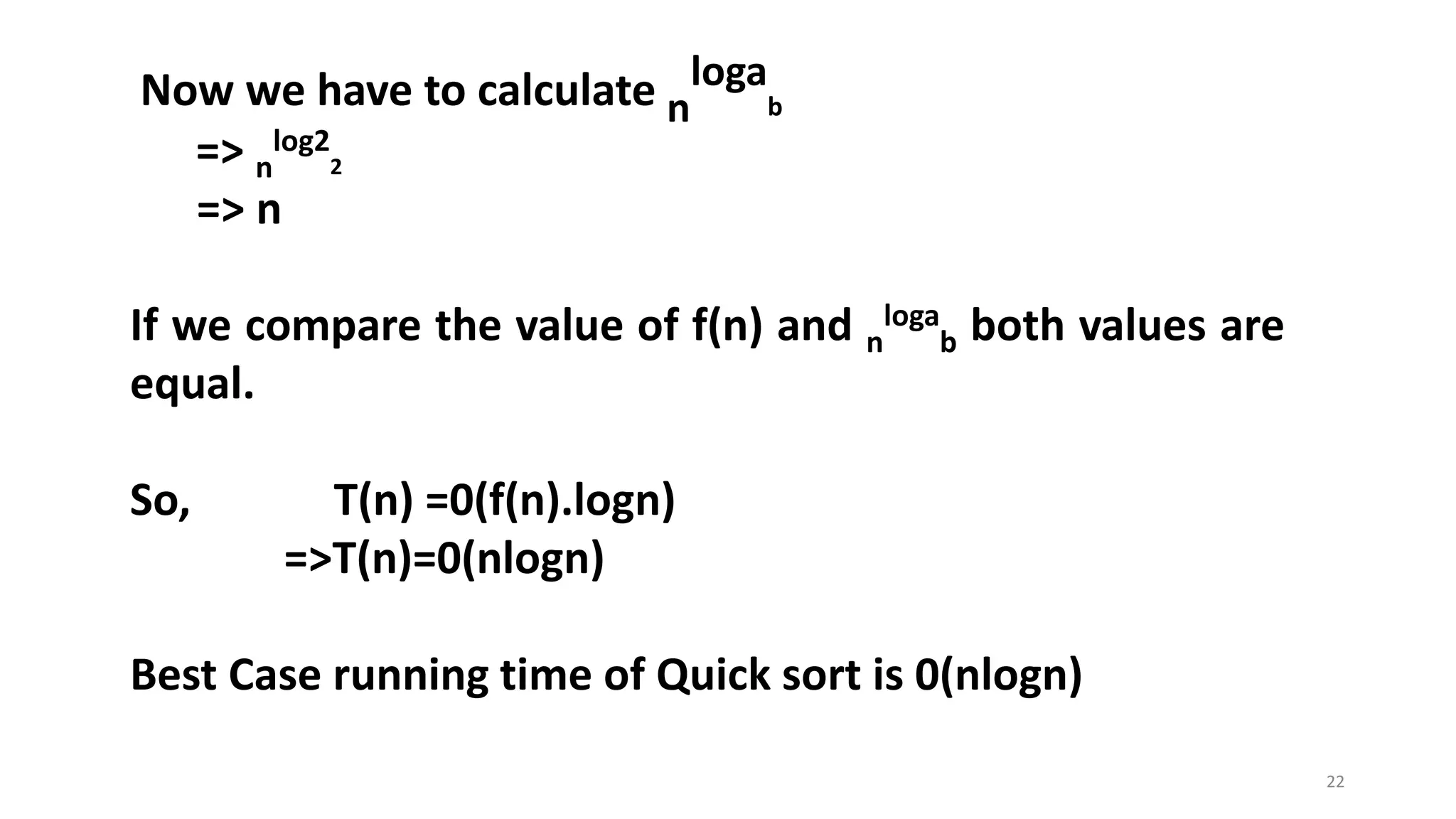
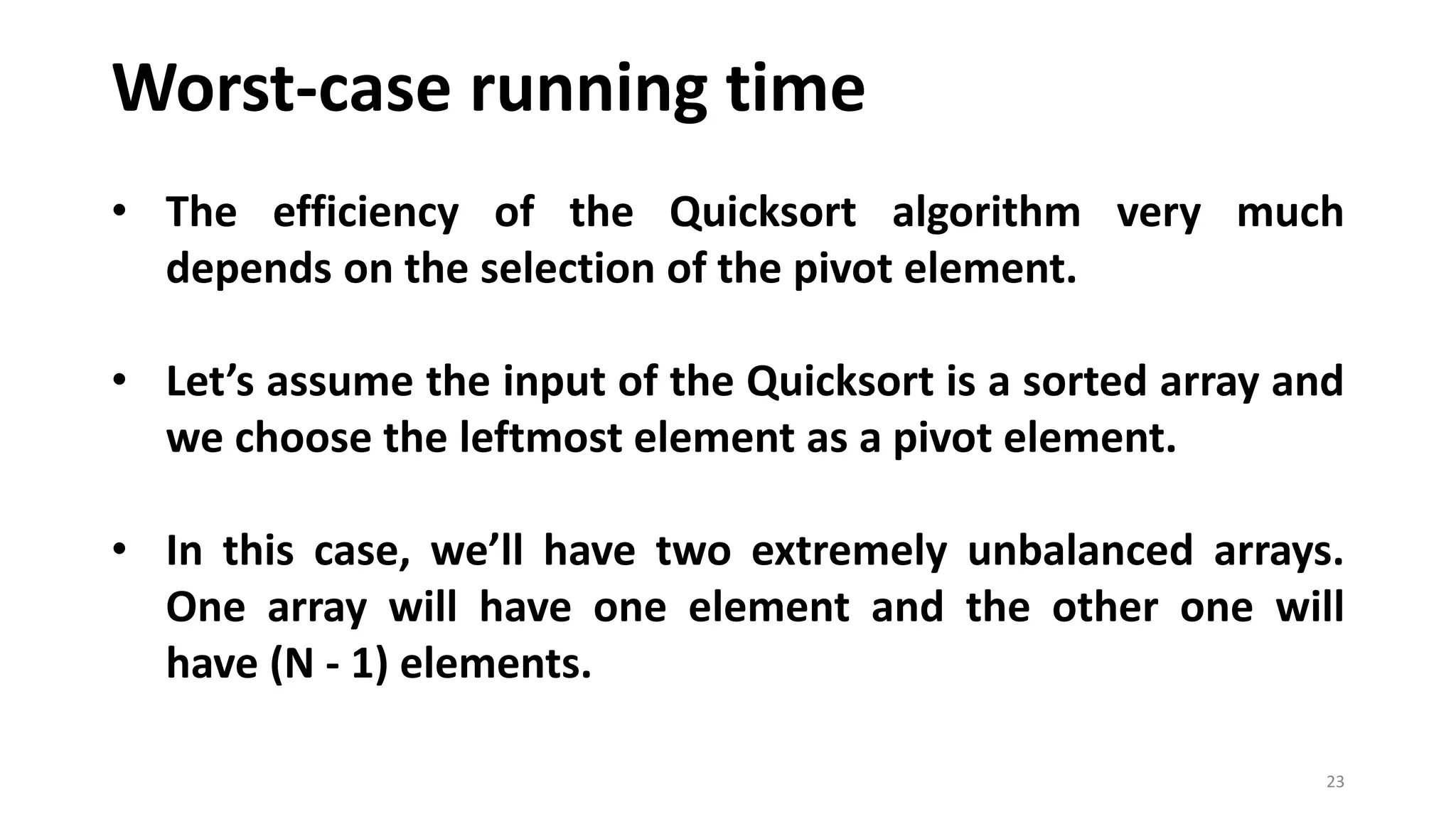
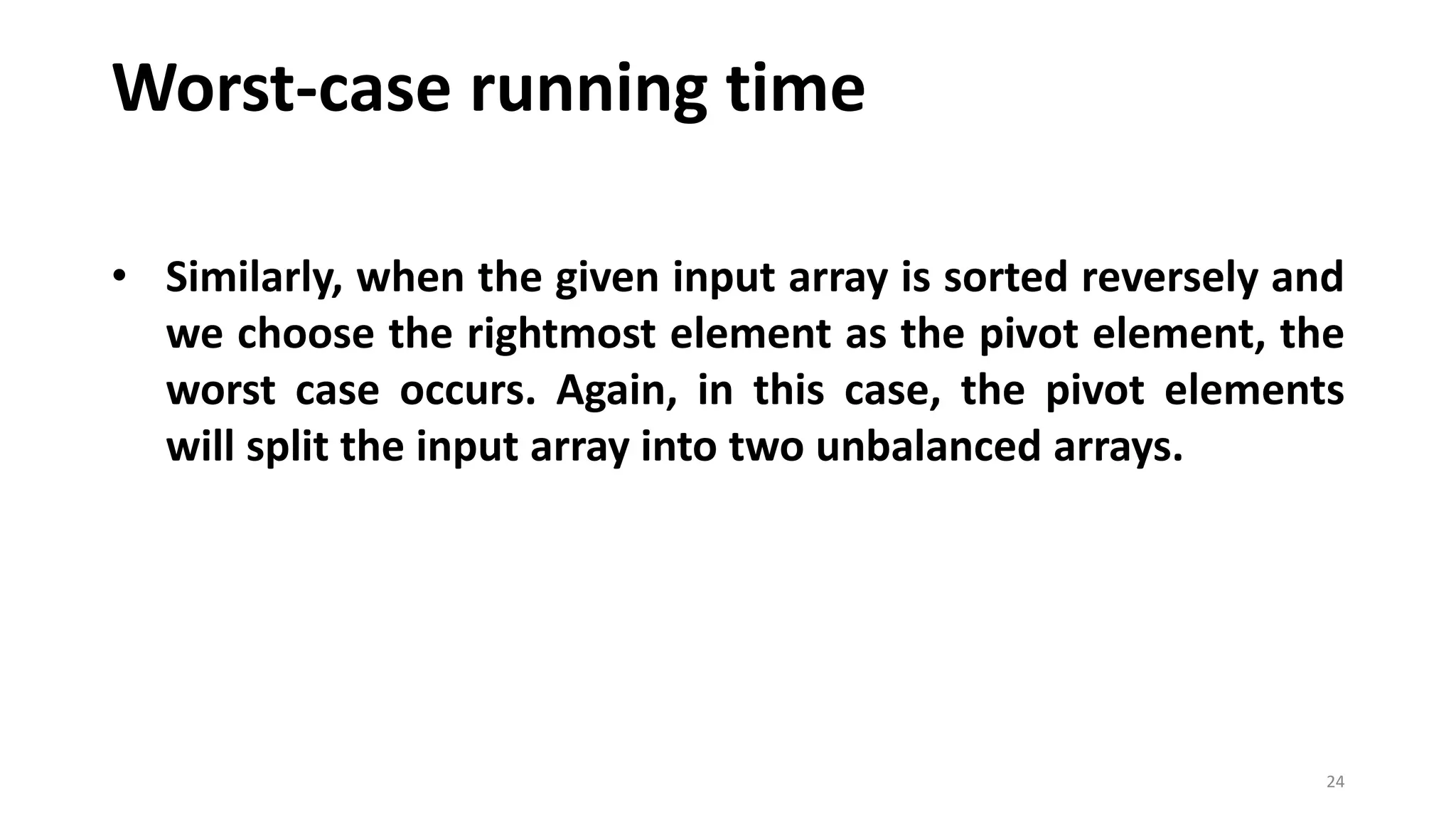
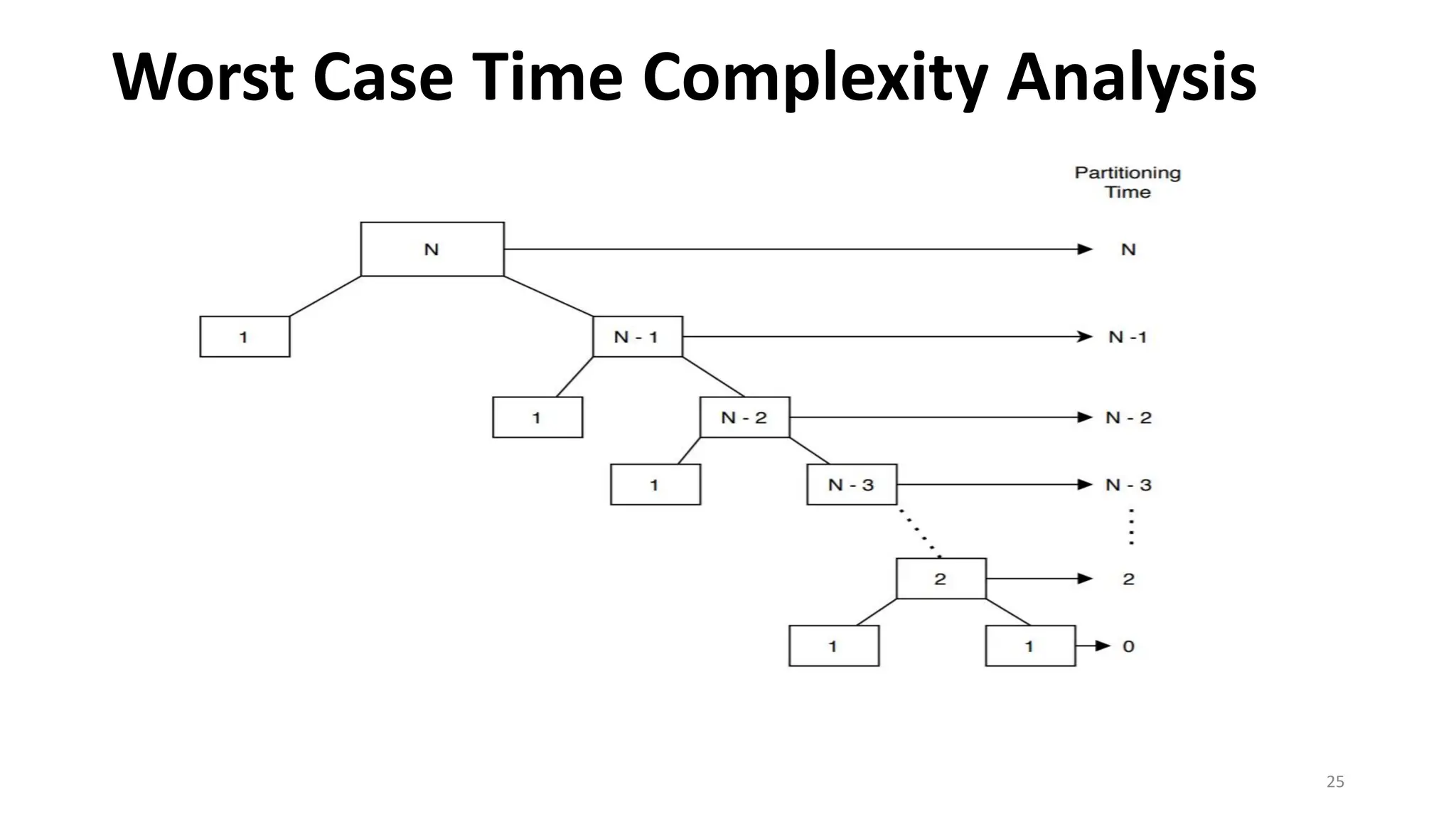
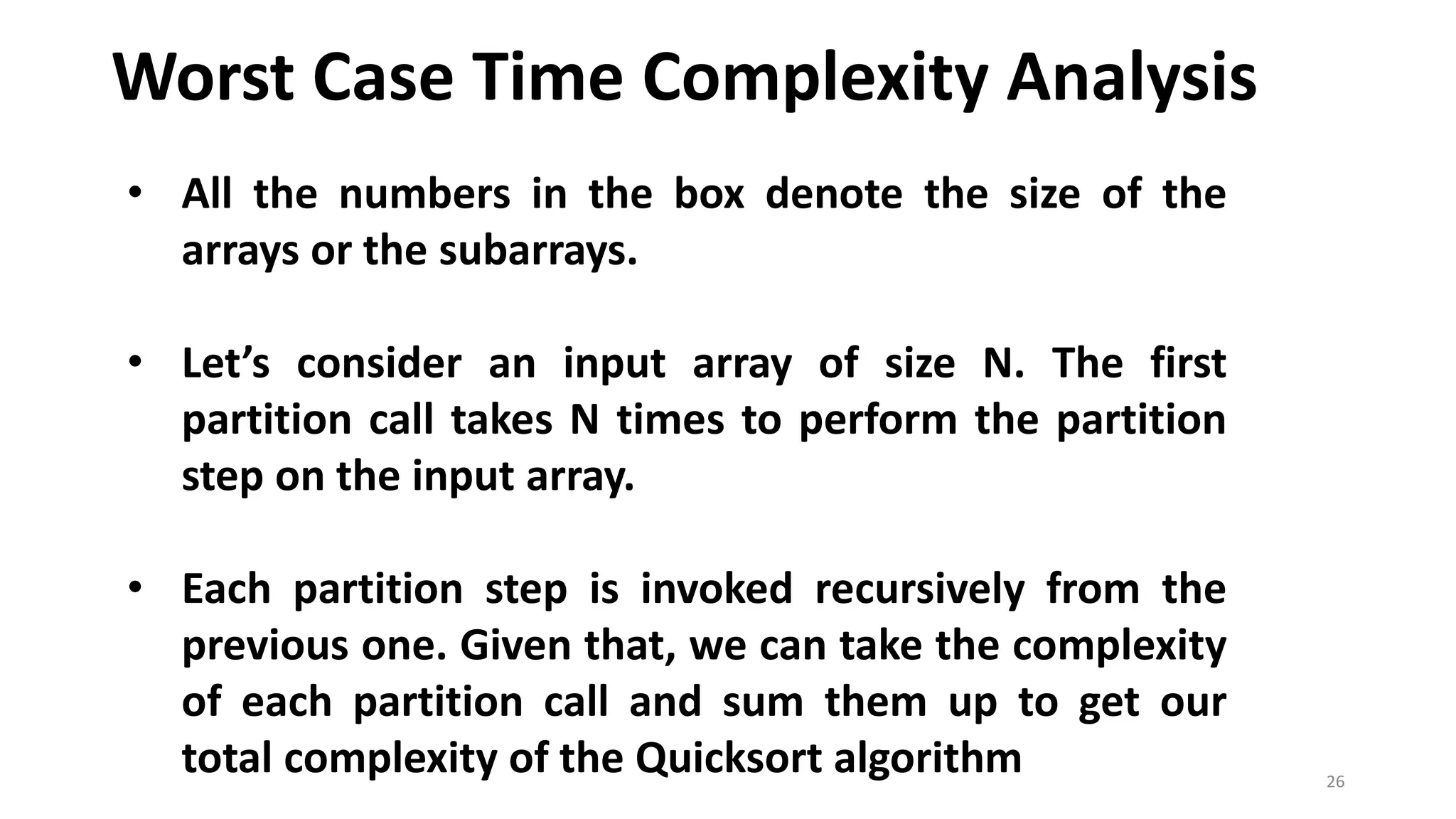
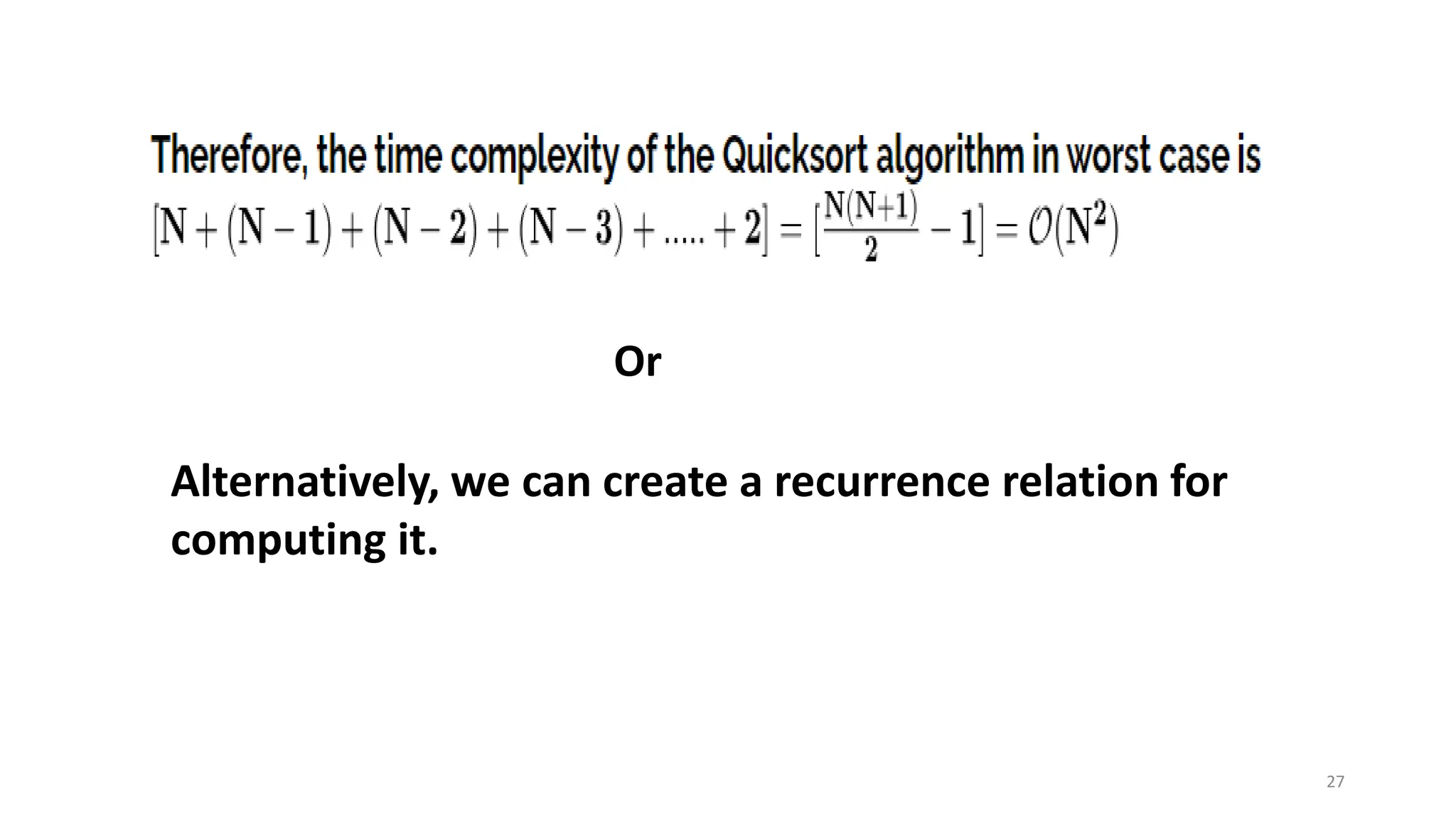
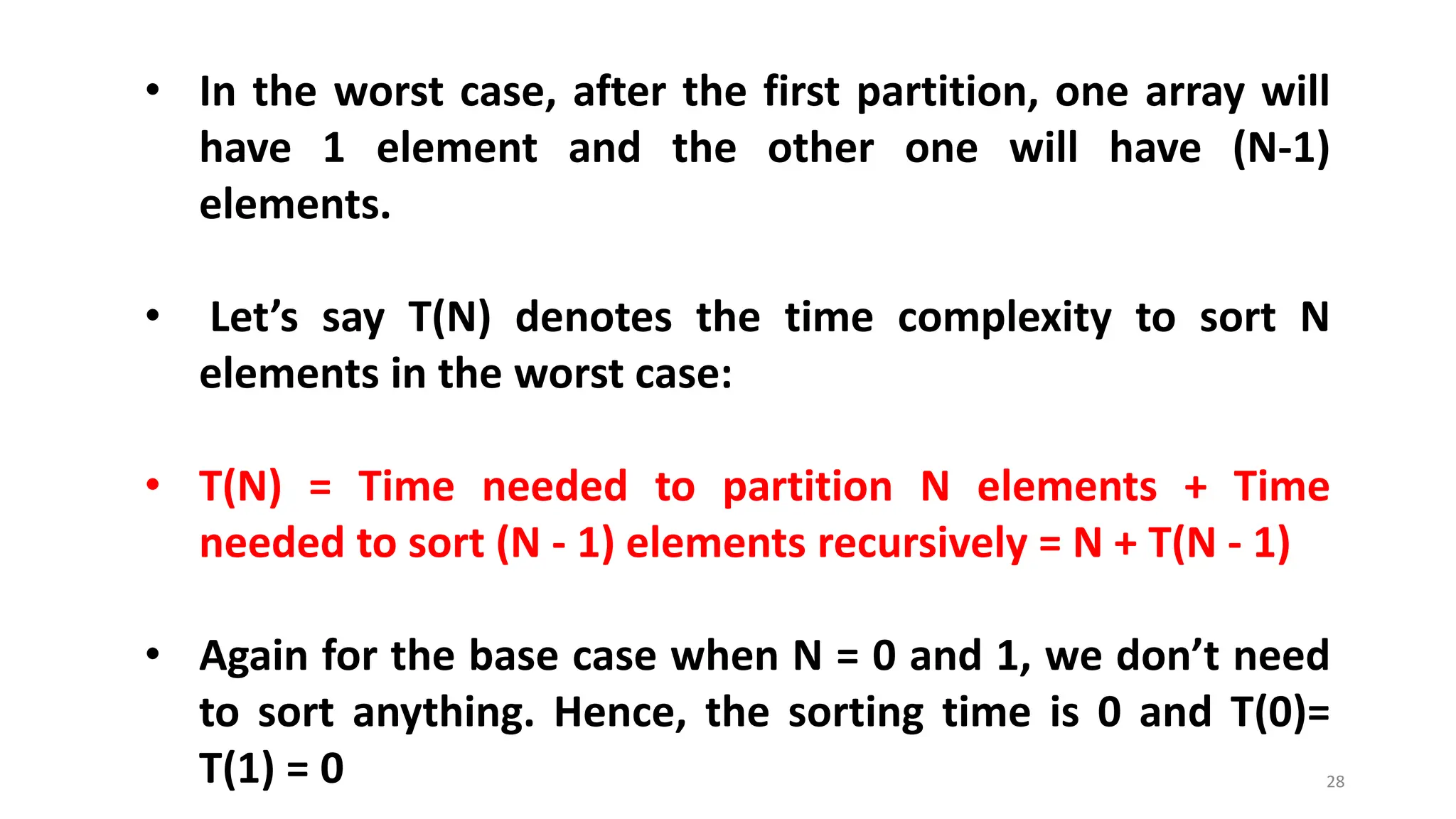
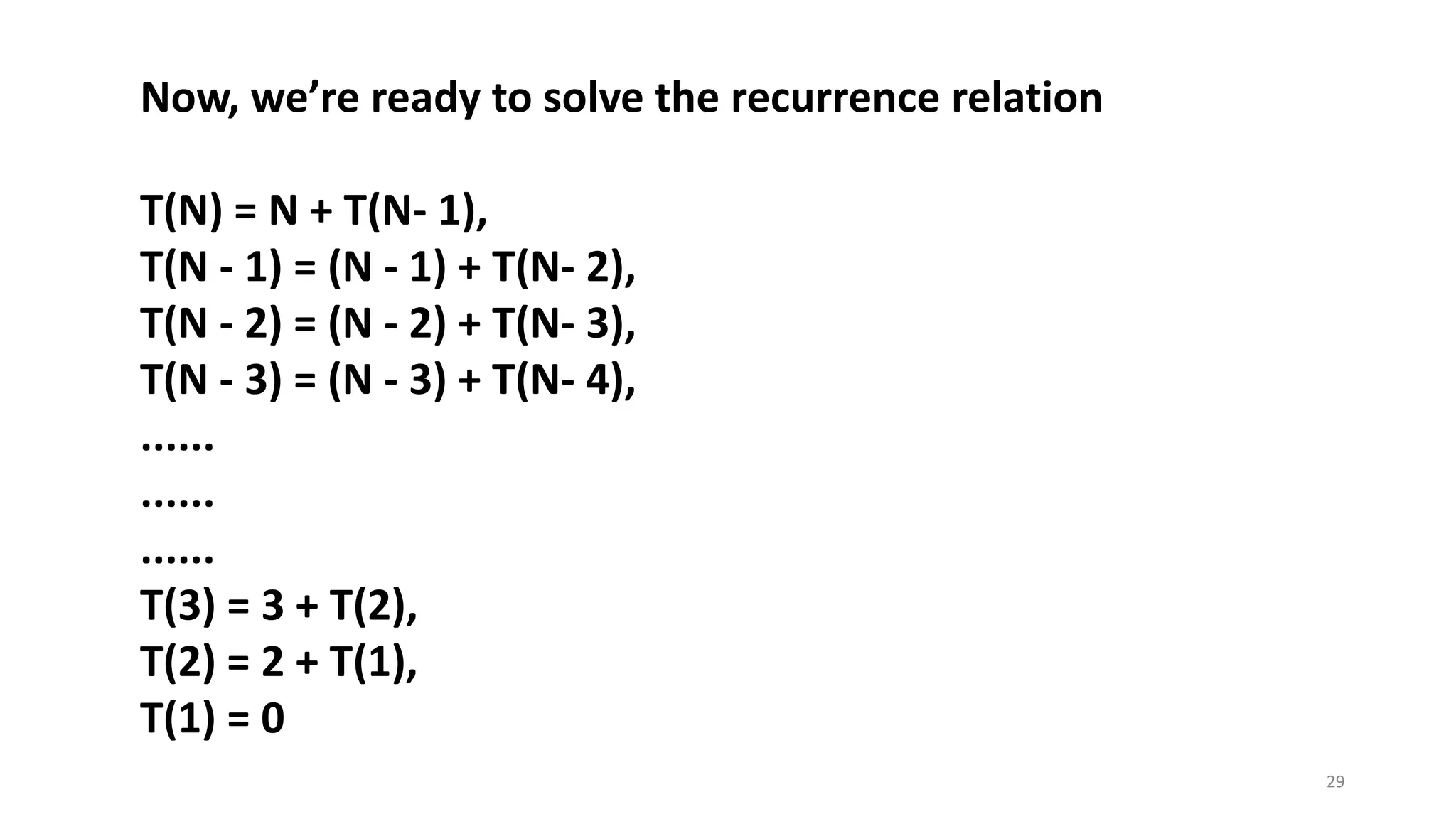
![30
As a result, T(N) = N + (N-1) + (N-2) ... + 3 + 2
= [
𝑵(𝑵+𝟏)
𝟐
- 1] =O(N2)](https://image.slidesharecdn.com/class13quicksortalgorithm-231104025026-e209dca2/75/Class13_Quicksort_Algorithm-pdf-30-2048.jpg)
